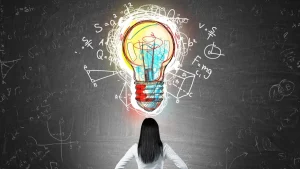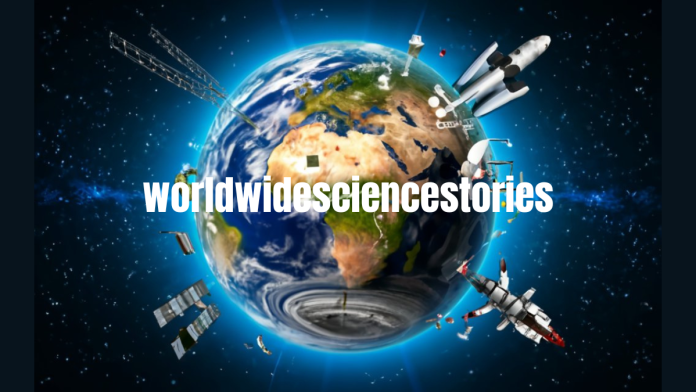Introduction
Science is a worldwide undertaking, with revelations and developments occurring in each side of the world. However, how frequently do we hear these tales? WorldWideScienceStories is a website that tells the incredible stories of scientific achievements from all over the world. This article examines how we can all access and share these tales of discovery, highlights some of the most inspiring examples, and delves into the significance of these stories.
The Force of Logical Stories
Why Science Needs Stories
Stories are powerful. They pique our imagination, make difficult concepts understandable, and make information relatable. Stories can help scientists turn abstract ideas into real-world experiences. They offer context, elicit feelings, and pique curiosity. Consider this: what sticks with you more — a rundown of realities or a convincing story? Stories about science can help people understand the complicated and the abstract.
The Job of Correspondence in Science
Correspondence is at the core of science. Without sharing revelations, examination would stay confined, and advance would be hindered. Science is better understood and appreciated when scientists and the general public can communicate with one another through effective science communication. Scientific knowledge becomes accessible, engaging, and influential through narratives.

The Development of Global Science Communication
From ancient times to the digital age
science communication has undergone significant change. Knowledge was passed down orally or through handwritten manuscripts in ancient times. The coming of the print machine in the fifteenth century altered data spread, making logical information more available. Today, the computerized age has made this a stride further, permitting moment worldwide correspondence.
Important Steps in Science Communication
The Print machine Unrest The print machine
designed by Johannes Gutenberg during the 1440s, was a unique advantage for science. It empowered the large scale manufacturing of books, spreading logical information all over. People all over Europe and the world were able to share ideas and build on them thanks to this innovation, laying the groundwork for the scientific revolution.
The Internet Era
The internet came into existence in the latter part of the 20th century. With just a few clicks, this huge advancement has made it possible to access a lot of information. Currently, scientists can share their work in real time with a global audience, removing geographical barriers and democratizing knowledge.
Motivating Logical Stories from Around the World
North America
Europe
The Revelation of Penicillin
In 1928, Alexander Fleming found penicillin, the primary genuine anti-infection, changing medication and saving endless lives. The significance of curiosity and the potential for unanticipated findings to alter the world are brought to light by this unintentional discovery that took place in a laboratory in London.
Asia
The Human Genome
Task was a worldwide logical undertaking that was finished in 2003. Asian scientists made significant contributions to the project. This significant undertaking mapped the entire human genome, paving the way for developments in biotechnology, genetics, and medicine. It exemplifies the capacity of international cooperation to achieve significant scientific milestones.
Africa
The Historical backdrop of Mankind’s
Beginnings in Africa is habitually alluded to as the “support” of humanity. The revelation of early primate fossils in East Africa has revealed insight into human development by and large. These findings emphasize the significance of Africa in human history and the need to preserve our shared legacy.
Safeguarding Australia’s
Reefs The Incomparable
Hindrance Reef in Australia is one of the world’s most biodiverse environments. Logical endeavors to save this regular marvel have prompted imaginative methodologies in sea life science and ecological science. The ongoing struggle to safeguard the fragile ecosystems of our planet is brought to light by these conservation stories.
Obtaining and Disseminating Science Tales
Using Digital Platforms and Online Resources
to Access Science Stories Getting access to science stories is now simpler than ever. For instance, anyone with an internet connection can access scientific research that has been compiled from all over the world by WorldWideScience.org. You can interact with scientific knowledge in a variety of ways through online journals, podcasts, and video channels.
Science Communication and Social Media Platforms
The ways in which we share and consume science stories have changed. Institutions and scientists use YouTube, Instagram, and Twitter to reach a larger audience. These platforms increase the accessibility and interest level of science by enabling users to exchange content, ask questions, and take part in conversations.
The Future of World-Wide
Science Fiction New Trends in Science Storytelling
With the development of technology come new ways to tell science stories. Computer generated reality (VR) and expanded reality (AR) are opening new outskirts in science correspondence, permitting individuals to encounter logical ideas firsthand. These vivid advances make finding out about science seriously captivating and effective.
Science Communication and Artificial Intelligence (AI) Artificial intelligence
(AI) is also increasingly influencing science communication.Calculations based on simulated intelligence can break down enormous amounts of data into patterns and bits of knowledge that can be shared through convincing narratives. In addition, AI-powered tools are making it easier for researchers to present their findings to audiences that do not typically hold expert knowledge.
In conclusion,
there are numerous fascinating scientific tales all over the world that are merely awaiting publication. This strives to impart these accounts to individuals all around the world and assist them with diving deeper into science and what it means for our lives. By looking into these accounts, we can learn more about our general environment and inspire the next generation of researchers and trailblazers.
FAQs
Q1: WorldWideScienceStories: What is it?
A site called narrates scientific tales from throughout the globe with an emphasis on significant discoveries, inventions, and the individuals who made them.
Q2: Where can I find online stories about science?
You can get to logical stories through sites like WorldWideScience.org, online diaries, webcasts, and web-based entertainment stages where researchers share their work.
Q3: Why are stories about science important?
Science stories make complex ideas interesting, rouse interest, and cultivate a more noteworthy comprehension and enthusiasm for logical undertakings.
Q4: What significant scientific stories have emerged from various regions?
Models incorporate the Apollo 11 moon arriving from North America, the disclosure of penicillin in Europe, the Human Genome Venture in Asia, the revelation of early primate fossils in Africa, and coral reef preservation endeavors in Australia.
Q5: How is science correspondence’s future being molded by innovation?
By enhancing the accessibility, immersiveness, and engagement of science narrative, artificial intelligence (AI), augmented reality (AR), and virtual reality (VR) are contributing to the closing of the gap between scientists and the general public.



